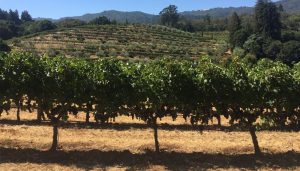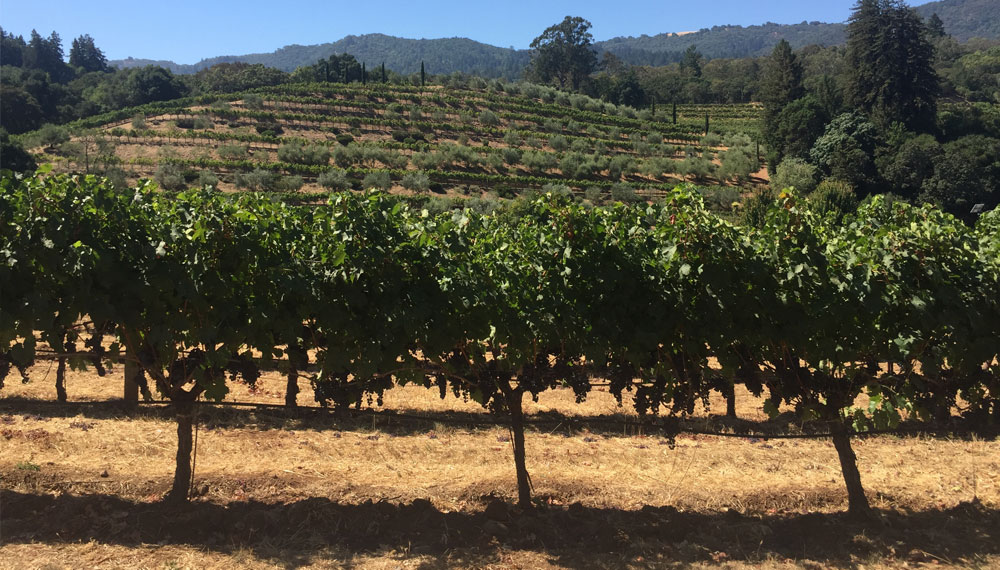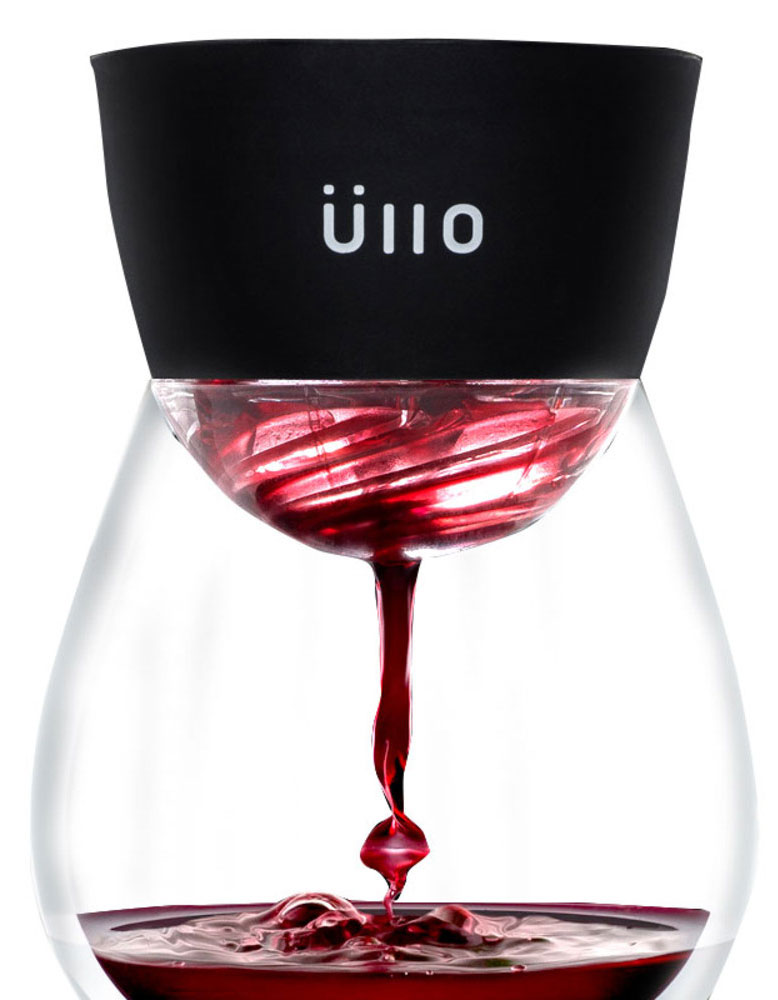
Sustainable vineyard agriculture
Wine is an expression of the terroir, directly impacted by farming techniques used in the vineyard. A recent study from France, published in Food & Nutrition Journal, indicates that specific pesticides, such as glyphostate in “Roundup,” can be tasted and identified in the resulting wine. Organic wine appears to be the answer, however restrictions against the use of preservative sulfites give bottles a limited life, causing them to be ineffectual for aging. There are options available for wine made from organic grapes, but the certification process is contested between the United States and Europe, causing further confusion.
Biodynamic farming is a holistic, self-contained approach to vineyard management. Elizabeth Candelario, president of Demeter USA, which is responsible for certification, explains that it is “not some vague sustainability challenge. It is a way of life.” Founded in the belief that repairing and listening to the property and soil ultimately benefits the harvest and long-term quality of the land, Biodynamic techniques emphasize using what is already on the property, rather than importing materials. The complex, seasonal system integrates cover crops and livestock, natural pest control through insectories and habitat adjustments, attention to the humus levels in soil, and includes a vineyard specific certification process. Instead of hazmat suits and dangerous chemicals being sprayed, Biodynamic farms are teeming with life.

Why wineries are transitioning
When Benziger Family Winery was founded, the rundown ranch in Glen Ellen, CA had a few acres of struggling grapevines. In what Mike Benziger describes as a fight against nature, they were determined to make conventional farming work, spraying every bug, chasing off anything that moved. A combination of devastating winter rainstorms causing landslides that left their parking lot clogged with mud and the continually unhealthy vines convinced them that change was needed. Through research, discussion, and a trip to Europe, in the late 1990s, Benziger was revitalized, achieving Biodynamic certification from Demeter.
Today the property is a lush swath across the hillsides, with flower gardens and cattle roaming the property. They give daily tours, explaining compost teas, natural fertilizers, and healthy vineyard practices, cultivating a large wine club following. During the drought of 2013, they were able to reduce water use through area specific probes to monitor soil moisture. They are one of many success stories from around the world.
The initial cost of transitioning is significant. There are mixed reports of higher versus gradually reduced cost per acre, but the flavor profile of the wine usually improves. The resulting balanced ecosystem enables healthier vines, building up the soil rather than breaking it down, and maintaining better water retention in Mediterranean climates like California. Wineries have reported increased loyalty in wine club members, higher numbers of visitors, and an improved ability to compete in the saturated wine market.
Biodynamic farming
Thinking back to the origins of grapevines, before they were carefully cultivated, woodlands were their natural habitat, with layers of plant material and undisturbed roots. A rich, diverse rhizosphere of microorganisms was able to develop, augmenting and protecting the vines in a symbiotic relationship. Books such as The Hidden Half of Nature explain the positive influence of a microbiome filled with beneficial “miniature farmers”. From soil to fruit, especially encouraging a unique yeast in the vineyard, constant tillage and sprays can severely damage the delicate ecosystem. Ask any winemaker about the importance of yeast development, and they will explain how crucial those microorganisms are for wine.
Cover crops such as clover or mustard can prevent erosion, improve nutrients, and encourage the rhizosphere structure. No tillage is required; if the cover crops need to be removed, natural methods are introduced, such as waiting until the plants recede to mow them, or using movable fences to control grazing habits of sheep. Balancing the nutrients of vines can be adjusted by introducing competitive perennial covers or less invasive options, like Creeping Red Fescue grass, when the vines require additional fertility.
“Animals are one of the most important aspects” Mike Benziger comments regarding Biodynamic farming. From wandering geese eating snails to alpacas and cattle grazing while assisting with compost preparations, animal husbandry is a crucial part of the cycle. Donkeys and lamas discourage coyotes, and livestock are moved to fallow areas of the property when not actively in the vineyards, usually between bud break and harvest. Creating compost that includes materials from on site cattle increases the relationship with the property, since they are digesting plant materials from the location and involved in returning nutrients, which can enhance the soil and microbial habitat. Biodynamic compost is slower to produce than commercial options, taking 5-6 months of curing time, and reducing pathogen concerns. Special preparation processes are used, which encourage diverse microorganisms, aerobic bacteria, and correct carbon to nitrogen proportions.
Biodynamic farming may seem complex, but the overall purpose is to produce a wine that is the best expression of the location, while regenerating natural resources, rather than exploiting them. Instead of imposing chemicals, techniques are found to use what is already available to adjust the system, such as Pseudomonas fluorescens bacteria as a control against root rot.

How to read U.S. biodynamic wine labels
There are two types of bottles to look for—”Biodynamic® Wine” and “Made with Biodynamic® Grapes Wine” along with the Demeter certified logo on either the front or back label. Both must be made from 100% Biodynamic grapes, with minimal adjustments and additives, but the “Biodynamic Wine” is more strict, only allowing manipulations in the case of emergencies, such as stuck fermentation. Either wine can have sulfites added for preservation up to 100 parts per million.
On wine labels, the “Made with Biodynamic Grapes Wine” allows National Organic Program approved options for the winemaker, allowing more freedom in the process. For example, if there are intense weather conditions such as a drought that year, a winery may choose to relax their standards, and fall under the “Made with Biodynamic Grapes Wine” category for that year.
If you are interested in visiting Biodynamic wineries, there is a full list found under Demeter Fact Sheets, currently called “Demeter USA Biodynamic Vineyards & Wineries”.
Research provided by Alexa Chipman, who attended the International Biodynamic Wine Conference hosted by Demeter USA in San Francisco May 6-7, 2018.